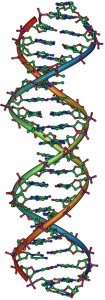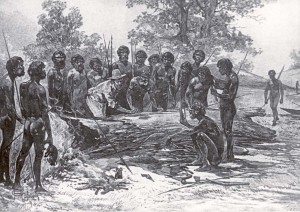A recent genetic test that was done on Aboriginal Australian men has revealed something quite different from what researchers expected. This genetic test is the first-ever completed analysis of the Y chromosomes from the Aboriginals. In the testing, it was revealed that there was a deep indigenous genetic history which actually traced all the way back to the first settlement on the continent nearly 50,000 years ago. These results challenge a previous theory that researchers had suggesting that there was an influx of people from India into Australia around 4,000 to 5,000 years ago.
The test that was done takes the DNA sequencing from the Y chromosome, which can only be transmitted from father to son. The results showed that there was no type of prehistoric migration of these indigenous people. The results actually show a long, independent history in Australia.

Modern humans had arrived in Australia about 50,000 years ago, the ancestors of the present-day Aboriginal Australians. They were among the earliest settlers outside of Africa. They arrived on the ancient continent, known as Sahul and which is today’s Australia, Tasmania, and New Guinea, most likely thousands of years before modern humans had arrived in Europe.
However, the team of researchers still have one unsolved mystery from the results of the genetic test. The question they ask is how exactly did the dingo, their native dog, arrive in Australia 5,000 years ago? Changes were also made in stone tool use and language around that same time, which raises questions about whether there were genetic additions to the Australia Aboriginal population.
Two previous genetic studies, one of which was also based on the Y chromosome, had suggested that those changes coincided with mixing Aboriginal and Indian populations about 5,000 years ago. A researcher on the team, Anders Bergstrom, had said that the team worked closely with the Aboriginal communities in order to sequence the Y chromosome DNA from 13 male volunteers in order to look into their ancestry. The data revealed that the Aboriginal Australian Y chromosomes were very distinct from the Indian ones, resulting in the previous studies being excluded from the puzzle as they no longer provided the evidence for a prehistoric migration from India. Bergstrom stated that the results agree with the archaeological record about when the people first arrived in that part of the world.
An associate professor at La Trobe University, Dr. John Mitchell, said that there is obviously a lot of interest in the Aboriginal community, so many people want to explore their genetic ancestry. Without their cooperation, none of the testing would be possible. The first step for the team, even before the articles about the researchers’ finds are published, is to return the results of the testing to the people who volunteered. Mitchell explained that the collaboration in genome sequencing and exploration of the Aboriginals’ ancient history was made possible

To further their research, the team is looking into how the dingo got to Australia, as well as into why other people like the seafaring Polynesians never settled on the continent. In order to rule out external genetic influences on the populations, the researchers will need to expand the genetic analyses beyond the Y chromosome and look into the whole genome.
Lesley Williams was responsible for the liaison with the Aboriginal community. She said that as an Aboriginal Elder she was delighted to help with the research. She added that she was not surprised that the results had confirmed that the ancestors had taught the community for many generations. She also stated that the community had lived there since the Dreaming.
The group leader at the Wellcome Trust Sanger Institute, Dr. Chris Tyler Smith, said that if the team fully sequences and analyzes Y-chromosomal DNA, they will be able to trace ancient human migrations; by genetically unearthing ancient history the team can then inform the living Aboriginal people about their ancestry. He added that this is made possible by using technology that has been available to researchers only in the last decade.
